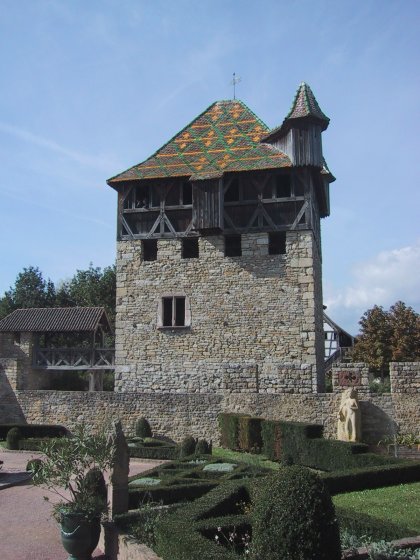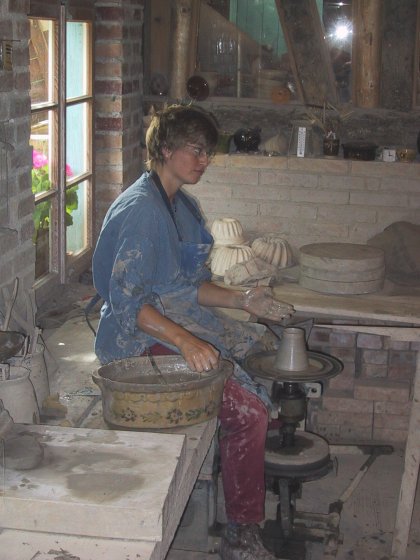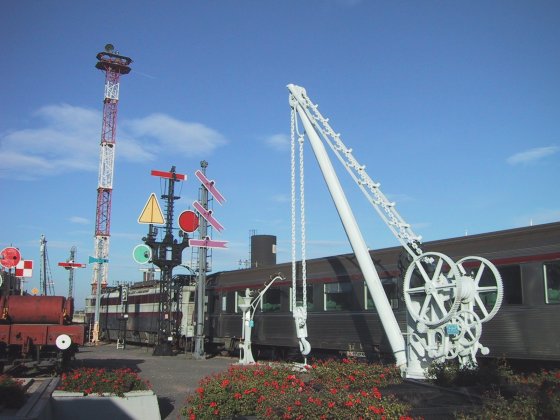David's Diary: Thursday, Sept. 27, 2001
Houses and Railways

Fortified House at Écomusée
School was once more put on hold for the day so that we could explore more of Alsace. Within an hour's drive are numerous things to see, so we decided to focus on two of the major ones near the town of Mulhouse (pronounced moo-looze). Our first stop was Écomusée d'Alsace.
This museum was created in 1984 to preserve and demonstrate the style of architecture in the region. Many older houses were being torn down and used for firewood. Before all of this history was lost, the museum was created to salvage and show the traditional houses. Some of the houses were taken apart piece-by-piece and reconstructed at the museum. The site is laid out like a village with buildings from the same area grouped together. One example was a fortified house from Mulhouse where you got to walk inside and climb the stairs to the final fortifications at the top of the house (complete with a door to close over the stairs). Another example was a small workers house, with three small rooms, and an attached livestock building. There was a pig, a goat, chickens, and rabbits occupying the livestock building and the children got to pet the animals.

Creating Pottery
The museum also has a number of live demonstrations including a blacksmith, carpentry, and pottery. The pottery building was interesting for all of us. We got to watch as the potter first kneaded and shaped the clay. She then setup the potter's wheel and started shaping a small jug. It looked difficult to patiently shape the clay, but before too long the shape of the jug started to appear. After being completed the jug is hand decorated, glazed, and then put in the kiln. The kiln is only fired four times a year. We got to watch them loading the kiln and there were no empty spaces when they were through.

Musée français du Chemin de fer
After Écomusée d'Alsace we drove into Mulhouse to visit Musée français du Chemin de fer. This is a train museum with beautifully restored locomotives and carriages. There were steam, diesel, and electric locomotives that spanned more than a hundred years. Some of them even had cutaways so that you could see how the machinery operated.
Carriages varied from fourth-class compartments that consisted of nothing more than wooden bench seats, to first-class carriages with padded seats, formal dinnerware, and bedrooms complete with bathrooms. Outside were examples of switches, signal lights, and demonstrations of railroad construction techniques. All of the rolling stock was shown on rails so it felt like you were wandering through a railway yard looking up at these huge beasts or walking underneath in a maintenance pit while seeing the underside of a real train.